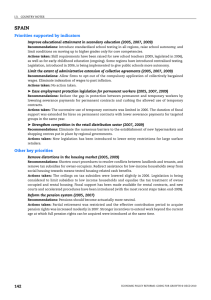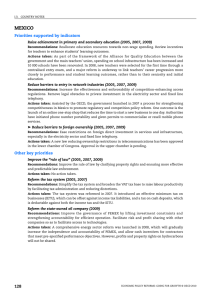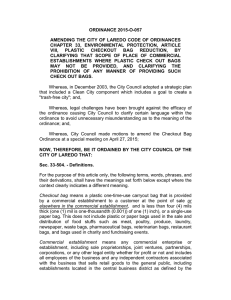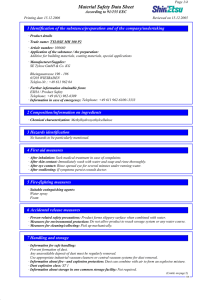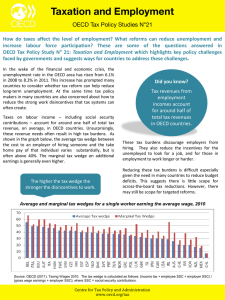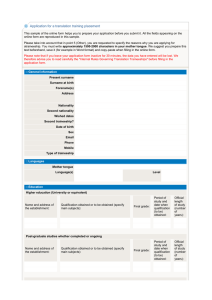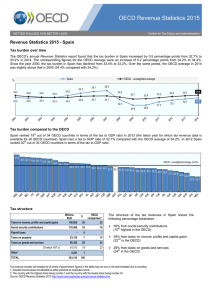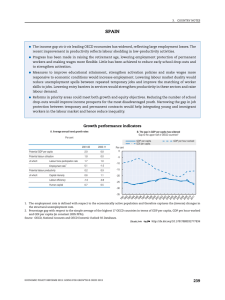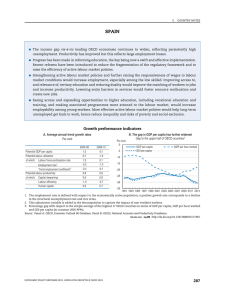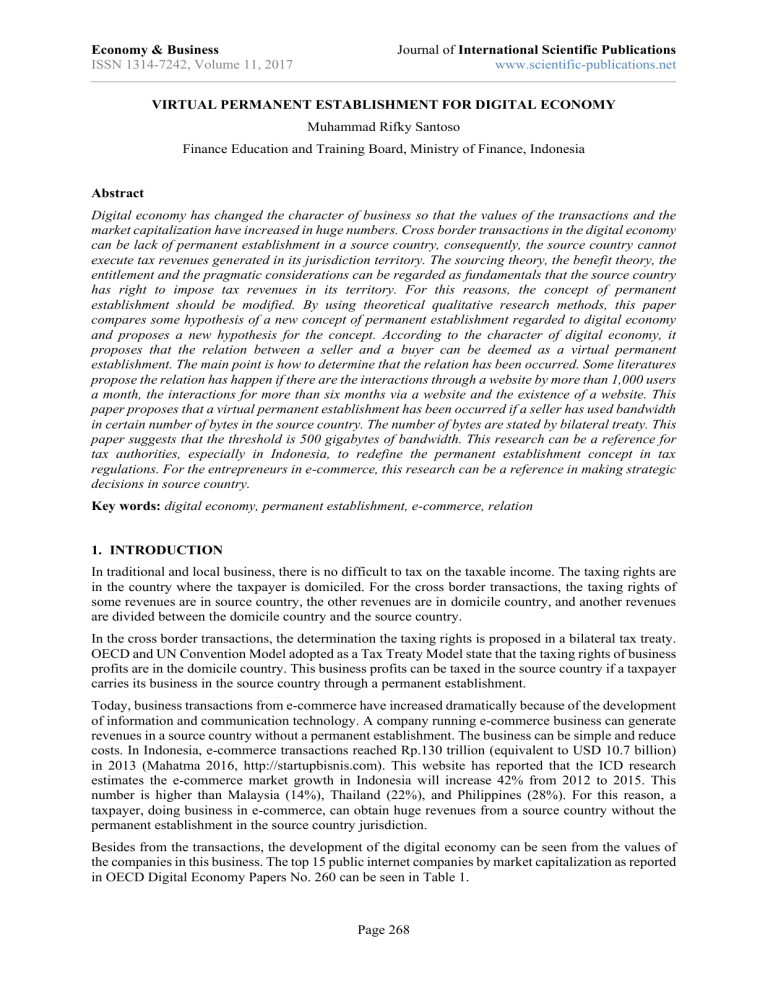
Economy & Business ISSN 1314-7242, Volume 11, 2017 Journal of International Scientific Publications www.scientific-publications.net VIRTUAL PERMANENT ESTABLISHMENT FOR DIGITAL ECONOMY Muhammad Rifky Santoso Finance Education and Training Board, Ministry of Finance, Indonesia Abstract Digital economy has changed the character of business so that the values of the transactions and the market capitalization have increased in huge numbers. Cross border transactions in the digital economy can be lack of permanent establishment in a source country, consequently, the source country cannot execute tax revenues generated in its jurisdiction territory. The sourcing theory, the benefit theory, the entitlement and the pragmatic considerations can be regarded as fundamentals that the source country has right to impose tax revenues in its territory. For this reasons, the concept of permanent establishment should be modified. By using theoretical qualitative research methods, this paper compares some hypothesis of a new concept of permanent establishment regarded to digital economy and proposes a new hypothesis for the concept. According to the character of digital economy, it proposes that the relation between a seller and a buyer can be deemed as a virtual permanent establishment. The main point is how to determine that the relation has been occurred. Some literatures propose the relation has happen if there are the interactions through a website by more than 1,000 users a month, the interactions for more than six months via a website and the existence of a website. This paper proposes that a virtual permanent establishment has been occurred if a seller has used bandwidth in certain number of bytes in the source country. The number of bytes are stated by bilateral treaty. This paper suggests that the threshold is 500 gigabytes of bandwidth. This research can be a reference for tax authorities, especially in Indonesia, to redefine the permanent establishment concept in tax regulations. For the entrepreneurs in e-commerce, this research can be a reference in making strategic decisions in source country. Key words: digital economy, permanent establishment, e-commerce, relation 1. INTRODUCTION In traditional and local business, there is no difficult to tax on the taxable income. The taxing rights are in the country where the taxpayer is domiciled. For the cross border transactions, the taxing rights of some revenues are in source country, the other revenues are in domicile country, and another revenues are divided between the domicile country and the source country. In the cross border transactions, the determination the taxing rights is proposed in a bilateral tax treaty. OECD and UN Convention Model adopted as a Tax Treaty Model state that the taxing rights of business profits are in the domicile country. This business profits can be taxed in the source country if a taxpayer carries its business in the source country through a permanent establishment. Today, business transactions from e-commerce have increased dramatically because of the development of information and communication technology. A company running e-commerce business can generate revenues in a source country without a permanent establishment. The business can be simple and reduce costs. In Indonesia, e-commerce transactions reached Rp.130 trillion (equivalent to USD 10.7 billion) in 2013 (Mahatma 2016, http://startupbisnis.com). This website has reported that the ICD research estimates the e-commerce market growth in Indonesia will increase 42% from 2012 to 2015. This number is higher than Malaysia (14%), Thailand (22%), and Philippines (28%). For this reason, a taxpayer, doing business in e-commerce, can obtain huge revenues from a source country without the permanent establishment in the source country jurisdiction. Besides from the transactions, the development of the digital economy can be seen from the values of the companies in this business. The top 15 public internet companies by market capitalization as reported in OECD Digital Economy Papers No. 260 can be seen in Table 1. Page 268 Journal of International Scientific Publications www.scientific-publications.net Economy & Business ISSN 1314-7242, Volume 11, 2017 Table 1. Top 15 Public Internet Companies by Market Capitalization in 1995 and 2015 1995 December Main Product or Activity USD bn 2015 May Main Product or Activity USD bn 1 Netscape Software 5.42 Apple Hardware, services 763.57 2 Apple Hardware 3.92 Google Information (search) 373.44 3 Axel Springer Media, Publishing 2.32 Alibaba Goods (e-com) 232.76 4 RentPath Media, rental 1.56 Facebook Information (social, P2P) 226.01 5 Web.com Web services 0.98 Amazon.com Goods (e-com) 199.14 6 PSINet ISP 0.74 Tencent Information (social, P2P) 190.11 7 Netcom On-Line ISP 0.40 eBay Goods (e-com) 72.55 8 IAC/Interactive Media 0.33 Baidu China Information (search) 71.58 9 Copart Vehicle auctions 0.33 Priceline Group Services 62.65 10 Wavo Corporation Media 0.20 Uber Services (P2P) 51.00 11 iStar Internet ISP 0.17 Salesforce.com Services 49.17 12 Firefox Communications ISP 0.16 JD.com Goods (e-com) 47.71 13 Storage Computer Corp. Storage software 0.10 Yahoo! Information (search) 40.81 14 Live Microsystems Hard- and Software 0.90 Netflix Services (media) 37.70 15 iLive Media 0.06 Airbnb Services (P2P) 25.00 17.00 2,443.00 Note: Uber and Airbnb are not publically traded companies and their market valuation is based on estimation. They are replacing Linkedln (14) and Twitter (15) from the original list compiled by the source. Source: based on KPCB 2015; Fortune 2015a. From Table 1, the value of the company has multiplied more than 143 times over 20 years by using market capitalization indicator (current dollars). This condition has made the source country upset because of inability to collect income tax. Besides the absent of the permanent establishment, there are many issues how to avoid income tax from the business profits in the digital economy, such as maximizing deductions and taxing income generated in market jurisdiction. This article will focus how to determine a permanent establishment in business using information and communication technology. Today (September 2016), there is a dispute between Indonesia and Google how to tax the Google’s huge revenues derived from Indonesia. The main point is that Google does not have a permanent establishment in Indonesia, consequently, Google’s business profit should be taxed in the domicile country. In this case, the Google’s revenues from Indonesia are shifted to Google Asia Pacific domiciled in Singapore. Actually, not only Indonesia has problems how to tax Google, but also Great Britain, Italy, French, Spain, and Australia (Panji 2016, www.cnnindonesia.com). In the beginning, the information and communication technology was used to facilitate business. In the subsequent development, the information and communication technology is to be a business, called digital economy. The digital economy includes such as e-commerce, app store, cloud computing, and payment system. The digital economy has grown rapidly with huge amount of money. There are many potential losses to tax in a source country because the definition of a permanent establishment cannot afford the characters of the digital economy. One of the digital economy characters is mobility. The mobility respects to intangible assets, users, and business functions. The intangible assets as key features of the digital economy can be present anywhere in the world and be easily to transfer. The users can use the digital economy anywhere, such as purchase Page 269 Economy & Business ISSN 1314-7242, Volume 11, 2017 Journal of International Scientific Publications www.scientific-publications.net product in a country that different from the buyer domicile country. A company in the digital economy can move easily its domicile (OECD 2015). For this reason, it is urgent to modify the definition of the permanent establishment especially for the digital economy. 2. METHOD This research uses the theoretical qualitative research methods. By analyzing relevant literatures, it can be inferred the gap of the permanent establishment definition that relevant to the digital economy characters. The literatures are academic journals, working papers, and other related articles. By using inductive approach, this paper describes and compares some hypothesis how to define a new concept of permanent establishment in digital economy. After gaining an understanding of underlying reasons of the hypothesis, this paper gives suggestions as a new hypothesis to enrich the new concept of permanent establishment. Understanding the digital economy is the crucial point. For this reason, this paper explains about the meaning of the digital economy, the types of the digital economy, the characteristics of the digital economy, and the opportunities in reducing income tax in the digital economy. The source country has rights to tax revenues derived in its jurisdiction territory by the digital economy activities. To support this argument, this research analyzes the sourcing theory and the benefit theory. Other point of views to rationale the rights are the entitlement and the pragmatic considerations. 3. DIGITAL ECONOMY The digital economy that involved cross border transactions can be described into some types. OECD report, OECD/G20 Base Erosion and Profit Shifting Project – Addressing the Tax Challenges of the Digital Economy (2015) explains the new business models of the digital economy. The types of the digital economy include: 1. Electronic commerce a. Business-to-business models b. Business-to-consumer models c. Consumer-to-consumer models 2. Payment service a. Cash payment solutions b. E-wallet or cyber-wallet c. Mobile payment solutions 3. App stores 4. Online advertising 5. Cloud computing a. Infrastructure-as-a-service b. Platform-as-a-service c. Software-as-a-service d. Content-as-a-service e. Data-as-a-service 6. High frequency trading Page 270 Journal of International Scientific Publications www.scientific-publications.net Economy & Business ISSN 1314-7242, Volume 11, 2017 7. Participative networked platforms OECD has defined electronic commerce (e-commerce) as: the sale or purchase of goods or services, conducted over computer networks by methods specifically designed for the purpose of receiving or placing orders. The goods or services are ordered by those methods, but the payment and the ultimate delivery of the goods or services do not have to be concluded on-line. An e-commerce transaction can be between enterprises, households, individuals, governments, and other public or private organizations. The key point in this type of business is the presence of computer network. This apparatus can be used to identify the existence of the e-commerce activities. To run computer networks, this apparatus need bandwidth in the country. The kinds of products in e-commerce are goods and services. In principle, ecommerce is the same as the traditional business. Payment services are the mediatory to help the sellers and buyers in paying on-line transactions. The payments use a variety methods, such as credit card and debit card. This payments give some benefits for the users, there are (OECD 2015): 1. Protection against fraud 2. Faster delivery of payment 3. The ability to transact in multiple currency To run this payment services, the actors are using a software-as-a-service model. The payment services business is giving services to the costumers and this includes as e-commerce. Application stores (app stores) is a type of digital distribution platform for software, often provided as a component of an operating system (OECD 2015). Users can download the software that is as intangible goods. App stores is one kind of e-commerce. Online advertising is an activity to display ads as a prominent business. In addition to displaying ads, online advertising is also gathering data and tracking how user interact to ads. Online advertising is giving services and information that can be categorized as intangible goods. For this reason, online advertising includes as e-commerce activity. OECD/G20 BEPS Project Action 1, states that: Cloud computing is the provision of standardized, configurable, on-demand, online computer services, which can include computing, storing, software, and data management, using shared physical and virtual resources (including network, servers, and application). Cloud computing is giving services and intangible goods to the costumers, therefore, it includes as ecommerce business. High frequency trading is as a facility to settle the transaction in high speed, such as security trading. This high frequency trading needs sophisticated technology. This kind of business offers services and includes as e-commerce activity. OECD/G20 BEPS Project Action 1, states that: A participative networked platform is an intermediary that enables users to collaborate and contribute to developing, extending, rating, commenting on and distributing user-created content (UCC). UCC comprises various forms of media and creative works (written, audio, visual, and combined) created users. A participative networked platform is offering services to the users, therefore, this platform includes as e-commerce activity. In general, all the type of the digital economy have the same criteria as e-commerce, offering goods and/or services to the users and using computer network. Page 271 Economy & Business ISSN 1314-7242, Volume 11, 2017 Journal of International Scientific Publications www.scientific-publications.net The characteristic of the digital economy (OECD 2015): 1. Mobility 2. Reliance on data 3. Network effects 4. Use of multi-sided business models 5. Tendency toward monopoly or oligopoly 6. Volatility The digital economy is heavy reliance on the intangible asset, such as royalty. This intangible assets create the value and support the economic growth of the company. In fact, the legal ownership of the intangible assets easily transfers to other entity, especially associate enterprises. The activities and legal owner of intangible can be different entities. This fact can be a way to transfer benefits from one entity to other entity. The user or costumer of the digital economy can move easily from one country to other country. It is difficult to determine that a costumer of the digital economy is in the source country. For example, an individual that a resident in TES country buys goods while staying in VES country, and use the application from DES country. The digital economy is using information technology, therefore, this activities can be managed remotely. Because of the development of technology, the costs to run this business have decreased significantly. The company in the digital economy can centralize the same activities in one geography. For example the location to carry out order of purchase only in one location although the orders come out from all over the world. The digital economy is using huge data collected from the users. This data are a key point to increase the value of the company. As cited by OECD (2015), the McKinsey Global Report notes five broad ways in which leveraging big data can create business’ value: 1. Creating transparency by making data more easily accessible in a timely manner to stakeholders with the capacity to use the data. 2. Managing performance by enabling experimentation to analyze variability in performance and understanding its root causes. 3. Segmenting populations to customize products and services. 4. Improve decision making by replacing or supporting human decision making with automated algorithms. 5. Improve the development of new business models, products, and services. Networks effects are the decision of a user to do something from the benefit that gained from other users. In the digital economy, a user will find out the other users experiences before making decision to use the same product. This networks effects are crucial feature to increase the value of the company in digital economy. This effects can be used to develop the company strategy in order to increase services. OECD (2015) explains that multi-sided business model: is based on market in which multiple distinct groups of persons interact through an intermediary or platform, and the decisions of each group of persons affects the outcome for the other groups of persons through a positive or negative externality. Example of a multi-sided business model is a payment card system. More merchants using card system will give more advantage for buyers. The developer of the card system, will increase the services and get more advantages. The decision of the merchant using card system affects other group, the developer of the card system. Page 272 Journal of International Scientific Publications www.scientific-publications.net Economy & Business ISSN 1314-7242, Volume 11, 2017 The huge data, intangible assets, and multi-sided business models are the factors to attract users. The first company gained benefits by many users will have strong infrastructures. Many other companies will follow the first company and use the available infrastructures. This fact will introduce the strong company to be monopoly or oligopoly in the digital economy. The development of technology and business in the digital economy, will reduce the entry barriers. Consequently, it is hard for a company to sustain success and maintains dominant in the market for the long term. This fact will change the dominant market player in the short term. The volatility always occurs in the digital economy. There are two ways in reduce tax in the digital economy, direct income tax and value added tax. This article will mention only for direct income tax. The opportunity to reduce income tax can be divided into (OECD 2015): 1. Eliminating or reducing tax in the market country a. Avoiding a taxable presence b. Minimizing the income allocable to functions, assets and risks in the market jurisdictions c. Maximizing deductions in market jurisdictions 2. Avoiding withholding tax 3. Eliminating or reducing tax in the intermediate country 4. Eliminating or reducing tax in the country of residence of the ultimate parent This paper will focus the eliminating or reducing tax in the market country by avoiding a taxable presence. Because of the digital economy characters, revenues generated in the market country will not be taxed by absence of a permanent establishment. How to redefine a new concept of a permanent establishment in the digital economy is the focus in this paper. 4. THEORY AND RATIONALE Base to impose income tax, Article 7 of OECD Model Tax Convention states: The profit of an enterprise of a Contracting State shall be taxable only in that State unless the enterprise carries on business in the other Contracting State through a permanent establishment situated therein. If the enterprise carries on business as aforesaid, the profit of the enterprise may be taxed in the other State but only so much of them as is attributable to that permanent establishment. This Convention states that to impose income tax from business profit is only in residence based taxation if there is no permanent establishment. Actually, besides a residence based taxation, source based taxation can be used to impose income tax. Most countries, including Indonesia, impose income tax in two bases, residence based taxation and source based taxation. To support how to apply sourced based taxation, this paper analyses the sourcing theory, the benefit theory, the entitlement, and the pragmatic considerations. 4.1. Sourcing Theory The concept of sourcing theory states that a country is allowed to exercise taxes in its jurisdiction in respect of activities that produce income on its own territory (Hongler and Pistone 2015). The theory of income in the origin country by Kemmeren (2011) as cited by Hongler and Pistone (2015) state: The principle of origin justifies allocation of tax jurisdiction on income to a state if the income has been created within the territory of the state, i.e. the cause of the income is within the territory of that state. The origin of income is where the intellectual element (among the assets) is to be found. This intellectual element is provided by the activities of individual human beings. Only individuals can create income and things in themselves cannot. Page 273 Journal of International Scientific Publications www.scientific-publications.net Economy & Business ISSN 1314-7242, Volume 11, 2017 From Kemmeren statement, human being is a crucial point of view. Only human can generate revenues. The domicile of the human is in the sourcing country. Because of this reason, no human is no revenue. This is a valid reason that the source country has right to tax revenues generated by human being in its own jurisdiction. There is some weakness in Kemmeren view, because the view focus in supply side. To complete this view, Hongler and Pistone (2015) submit some additional point, the value creation. The requisition in order the sourcing country may tax for income derived in its own territory, there are: 1. The transaction arises in the market country. 2. The transaction can influence the performance of business, the buyers and seller. 3. The transaction arises value added. This value added is occurred by buyers and sellers sides. Pinto (2006) explains some argue that, if the source state’s only contributes its customer or telecommunication infrastructure, the residence state has right to tax for income. The reason is economic perspective because the wealth is created in the residence state. Basically, the source state has right to exercise tax from income generated in its jurisdiction although there is changing the way of the business, such as digital economy. 4.2. Benefit Theory Base on the benefit theory, the taxes are regarded as the price paid for all state services by all taxpayers taken together, and countries obtain their right to tax based on the services (benefits) provided (Pinto 2006). In the broad meaning, the benefits given by a source country can be specific or general. Some examples of the specific benefits are the special regulations and infrastructure that can make the business to be easy. The general benefits are such as protection to society, education, and market. These benefits are used by taxpayers to generate income in the source country. For the digital economy, the presence of permanent establishment is not necessary in the source country. Traditionally, the benefits given by a source country can be useful if there is a permanent in the source country. Although without permanent establishment in the digital economy, the source country still has right to tax for income generated in its own territorial. Pinto (2006) explains two reasons why the source country can tax for income without permanent establishment. First, from Prof. Skaar point of view, the permanent establishment is merely a piece of evidence of economic allegiance. It is not only the one, there is another evidence of economic substance. Second, although without permanent establishment, taxpayers from other country still get benefit from source country because of legal system in the source country. This system gives the law enforcement for the residence in the source country, such as intellectual property right. For this reason, a source country has rights to exercise income tax in its jurisdiction from the digital economy although there is no permanent establishment in the source country. 4.3. Entitlement The concept of entitlement has stated that a source country has entitlement to exercise tax for income generated in its jurisdiction geography even if the income accrues to non-resident taxpayers (Pinto 2006). The reason for the source country to tax is the place to generate income is in the source country. For the digital economy, the physical place is not needed to generate income in the source country, notwithstanding, the source country still has right to tax for income arises in its territory. The literatures to support the entitlement theory state that lack a physical presence in the source country is not an obstacle to collect tax because the economic presence can be a base to exercise income (Pinto 2006). The meaning of the economic presence would be defined. To exercise whether the economic activities has been presence or not, some questions can be used to determinant of economic presence. M.A Harris, as cited by Pinto (2006) has suggested the following three questions: Page 274 Economy & Business ISSN 1314-7242, Volume 11, 2017 Journal of International Scientific Publications www.scientific-publications.net 1. Did the taxpayer “purposefully avail” itself of the benefits of a taxing state? 2. Did the taxpayer’s conduct and operations in the taxing state rise to a level where it should have reasonably anticipated being hauled into court? 3. Were the taxpayer’s in-state activities a continuous and systematic part of its general business in the state? In summary, according to entitlement theory, the source country has right to exercise income tax if the economic presence, with certain threshold, has occurred in its own territory. 4.4. Pragmatic Considerations Base on pragmatic considerations, every country has the first right to impose tax for the payment derived in its country. The presence of a physical permanent establishment is a vehicle to enforce income tax. Transaction in the digital economy can negate the physical permanent establishment. The payment provider facilitated the payment can be used to collect tax. This provider can be deemed as agent that is considered dependent agent or permanent establishment (Pinto 2006). Based on sourcing theory, benefit theory, entitlement concept, and pragmatic considerations, the source country still has right to tax for income that derived in the digital economy. 5. LITERATURE REVIEW Information and communication technology has developed very vast and the tax regulations are standing behind. For the beginning, the technology was used as a tool in doing business. Today, the technology besides as a tool is a business itself. The technology as a business can be called digital economy. The digital economy does not need a specific country to run the business but need a country to get revenues. This condition can be a strategic to reduce taxes, especially income tax. Many countries, especially the source countries, have difficulties to tax the taxable income. There is a principle in OECD and UN Model that a source country can tax an income gained of a resident of a domicile country if the resident is doing business in a source country through permanent resident (PE). If there is no PE in a source country, the income derived cannot be taxed in a source country. For this case, the digital economy can run smoothly without PE in the source country. The digital economy can deliver tangible and intangible goods, services, and data. The most corporations running this digital economy are the Multinational Enterprises (MNE) that can control their activities around the world in certain geographical area. It means that MNEs can easily shift revenues and costs from one country to other country. The digital economy characteristics will make the source country difficult to exercise income tax from revenues generated in its jurisdiction. The OECD reports (2015) suggest to modify the definition of PE to address artificial arrangements through certain “conclusion of contracts” arrangement (EY 2015). The internet has changed the commercial world activities, consequently the new ways can be included in creating PE in a source country (Nkerebuka 2015). According to OECD Model Convention, the term “permanent establishment” means a fixed place of business through which the business of an enterprises is wholly or partly carried on. Besides a fixed place, a PE includes activities such as construction or installation project that has more than twelve months. The dependent agent, a person, can be deemed as PE if it is acting on behalf of an enterprise. This agent cannot make decision by its own. This OECD Model also states the place solely used for the certain activities cannot be deemed as PE. The activities are storing, displaying, purchasing, and delivering of goods, maintaining goods for further process, and placing to support other activity. OECD Commentary on Article 5 of the OECD Model Convention has notion about e-commerce and the definition of PE. The Commentary states that: Page 275 Economy & Business ISSN 1314-7242, Volume 11, 2017 Journal of International Scientific Publications www.scientific-publications.net 1. A web site in itself does not constitute a permanent establishment; 2. A server will need to be located in a jurisdiction for a “sufficient period of time” in order to be considered a permanent establishment; 3. An arrangement under which an enterprise’s web site is hosted by an Internet service provider (ISP) on the ISP’s equipment in the jurisdiction in question will not constitute a permanent establishment, although where the enterprise with the web site has the “server at its own disposal” this could constitute a permanent establishment; 4. No permanent establishment will exist where e-commerce operations carried on through computer servers and equipment in a jurisdiction are “restricted to the preparatory or auxiliary activities,” such as providing communications link, advertising, gathering market data, and supplying information. Li and See (2007) mentioned that Canada applied the OECD Model Convention in its treaty. OECD proposes the alternative way to identify new nexus for the digital economy. This proposal is not dealing with how the digital economy generates profit, but it engages in certain “fully dematerializes digital activities” (Blum, 2015). The criteria of “fully dematerializes digital activities” that stated by OECD and cited by Blum (2015): 1. The core business of the enterprise relies completely or in a considerable part on digital goods or digital services. 2. No physical elements or activities are involved in the actual creation of the goods or of the services and their delivery other than the existence, use, or maintenance of servers and websites or other information technology (IT) tools and the collection, processing, and commercialization of locationrelevant data. 3. Contracts are generally concluded remotely via the internet or by telephone. 4. Payments are made solely through credit cards or other means of electronic payments using on-line forms or platforms linked or integrated to the relative websites. 5. Websites are the only means used to enter into a relationship with the enterprise; no physical stores or agencies exist for the performance of the core activities other than offices located in the parent company or operating company countries. 6. All or the vast majority of profits are attributable to the provision of digital goods or services. 7. The legal or tax residence and the physical location of the vendor are disregarded by the costumer and do not influence its choices. 8. The actual use of the digital goods or the performance of the digital services do not require physical presence or the involvement of a physical product other than the use of a computer, mobile devices or other IT tools. These thresholds are difficult to be quantified (Blum 2015). Hongler and Pinston (2015) propose that it should not be relevant whether digital goods or digital services are the core business of an enterprises. Schaefer (2000) stated that the place of server can be anywhere, consequently it can be difficult to determine PE from server or equipment. The web site and server can shares some function and the web site is a mirror of the server service. For this reason, Schaefer proposed software agents could be deemed as a permanent establishment. Hongler and Pistone (2015) proposed wording for the definition of PE for digital economy as follow: If an enterprise resident in one Contracting State provides access to (or offers) an electronic application, database, online market place, storage room or offers advertising services on a website or in an electronic application used by more than 1,000 individual users per month domiciled in the other Contracting State, such enterprise shall be deemed to have a permanent establishment in the other Contracting State if the total amount of revenue of the enterprise due to the aforementioned services in the other Contracting State exceeds XXX (EUR, USD, GBT, CNY, CHF, etc.) per annum. Page 276 Economy & Business ISSN 1314-7242, Volume 11, 2017 Journal of International Scientific Publications www.scientific-publications.net Hongler and Pistone explained that there were needed further guidance in definition of such as users, database, advertising services, website, and users per month and domiciled. Avi-Yonah (2013) proposes that for a taxpayer whose US sales exceed $500,000 in any given calendar year would deemed to have a PE in the US and taxed on profits attributable to those sales. This sum of sales can be considered to fit out Hongler and Pistone’s proposal. Indonesia Income Tax Law Number 36 of 2008 stated that the presence of electronic agent to carry on business through internet can be deemed as PE. Other PE is a consultancy service. This service is deemed as PE if it is carried out more than 60 days in 12 months. Indonesia has anticipated the development of the digital economy by stated the present of electronic agent as PE, unfortunately, the regulations are still left behind the technology development. For the digital economy, the digital presence could be deemed to be exist in the country if it met some criteria. OECD states that a significant digital presence could be deemed to exist in a country when, for example: 1. A significant number of contracts for the provision of fully dematerialized digital goods or services are remotely signed between the enterprise and a costumer that is resident for tax purposes in the country; 2. Digital goods or services of the enterprise are widely used or consumed in the country; 3. Substantial payments are made from clients in the country to the enterprise in connection with contractual obligations arising from the provision of digital goods or services as part of the enterprise’s core business; or 4. An existing branch of the enterprise in the state offers secondary functions, such as marketing and consulting functions, that are targeted at clients’ resident in the state and that are strongly related to the core business of the enterprise. This significant digital presence is not final, because the word of “example”. This approach would have both theoretical and practical difficulties (Blum 2015). The alternative to test the significant digital presence can be seen from the creation of value added. The tests as proposed by OECD and cited by Blum (2015) are: 1. Relationships with customers or users extending over six months, combined with some physical presence in the country, directly or via a dependent agent. 2. Sale of goods or services by means involving a close relationship with customers in the country, including (i) through a website in the local language, (ii) offering delivery from suppliers in the jurisdiction, (iii) using banking and other facilities from suppliers in the country, or (iv) offering goods or services sourced from suppliers in the country. 3. Supplying goods or services to customers in the country resulting from or involving systemic datagathering or contributions of content from persons in the country. This test does not focus on the physical present, but the establishment of customer relationship via selling digital goods or services (Blum 2015) Pinto (2006) suggested to create a permanent establishment “fiction” for the e-commerce because of the absence of physical location. The criteria of this fiction or virtual permanent establishment are established by bilateral treaties between the source country and the domicile country (Prof. Skaar as cited by Pinto 2006). Hoffart (2007) proposed access to market proxy approach to be virtual permanent establishment in the digital age. If a company in resident country has access to market in a source country, the company will be deemed as a permanent establishment. The requirements to be meet in order to have access to market are: Page 277 Economy & Business ISSN 1314-7242, Volume 11, 2017 Journal of International Scientific Publications www.scientific-publications.net 1. The sales of a company in source country has over a certain number 2. The foreign business send bits of information via web into the host state. The number of sales in the source country has been proposed by Avi-Yonah (2013). The threshold of bits of information sending is still in questions. Hoffart does not give any certain threshold. 6. RESULT The digital economy is the sale or purchase of goods and services. The goods can be tangible goods and intangible goods. Principally, the digital economy is not different to traditional business but in fact the digital economy uses information and communication technology (ICT) that has some results that different from the traditional business, such as reach more and faster customers, places, revenues, and data. By using ICT, the digital economy agents can be easily to move their business such as place to conduct the business. The agents can generate revenues in the source country without physical present in the country. The source country will lose the opportunity to execute income tax because lack of permanent establishment. According to sourcing theory, benefit theory, entitlement and pragmatic considerations, the source country has right to execute taxes from revenues generated in its territory. For this reasons, the definition of PE should be reconceptualized for the digital economy. In the some literatures, the physical present is not as an evidence that an economic transaction has occurred. The economic transactions have taken place when there is a relation between a seller and a buyer. This relation can be deemed as a permanent establishment. This permanent establishment can be said as virtual permanent establishment. The main point is how to prove that the relation has occurred. Schaefer (2000) proposed that server can be an agent and be a permanent establishment. Hongler and Pistone (2015) proposed that more than 1,000 individual users per month and certain value of sales can be indicators there is a relation between a seller and a buyer. OECD proposed that the interaction more than six months and transactions with certain values of transactions can be indicators the relation has occurred. The significant digital presence can be an evidence that the digital agent has existed in the source country. The threshold how to identify the presence has been proposed by OECD. Blum (2015) states that the OECD’s thresholds are theoretical and practical difficulties to apply. According to the some proposed new concept for the virtual permanent establishment, this paper proposed how to determine the relation to a basic in determining the permanent establishment. Several considerations in redefining a permanent establishment concept, among others: 1. Digital economy agents must use computer networks and need bandwidth in the source country. 2. The new concept of a permanent establishment is proposed as a virtual permanent establishment. It can be inferred that the present of physical location is not the main reason there is permanent establishment. 3. The certain number of users for the electronic application can be a relation happen. 4. A significant number of contracts can be an existence of a relation. In fact, it have difficulties in determining the relation by using the number of users and contracts. The tax authority will have some burdens to prove the relation. The existence of a relationship can be identify by using computer network regarded bandwidth usage. However, to know of bandwidth usage, there is not the tax authority’s competence. Therefore, it is needed the cooperation between the tax authority and the other agencies. The amount of bandwidth usage can be an indicator of the relationship between sellers and buyers. The minimum limit or threshold the amount of bandwidth usage can be determined by bilateral agreement between the states. As a suggestion, the threshold of bandwidth usage is 500 gigabytes. The digital Page 278 Journal of International Scientific Publications www.scientific-publications.net Economy & Business ISSN 1314-7242, Volume 11, 2017 economy agent can be deemed has relation to its costumers if the company has used more than 500 gigabytes of bandwidth. The reason of 500 gigabytes of bandwidth is the number sufficient for the digital economy agent: 1. To introduce and explain the goods or services to users or costumers, 2. To earn big enough income to be taxed, 3. To conduct transactions with a certain number of users or customers, and 4. To receive feedback from users or costumers To see if there is bandwidth usage in accordance with the threshold, the tax authority needs cooperate with other parties. Directorate General Taxes as tax authority in Indonesia does not have the authority to determine how much bandwidth has been used. This authority is in another institution. To monitor this usage, there needs to be cooperation coordinated by a ministry-level agencies. Once the threshold has been reached, the permanent establishment deemed to have been existing even if at some time in the future the bandwidth usage under the threshold. 7. CONCLUSION Cross border transaction in the digital economy can eliminate a permanent establishment in the source country. The lack of permanent establishment will make the source country difficult to execute tax revenues. The concept of permanent establishment should be modified. The literatures proposed that the relationship between a seller and a buyer can be deemed as a permanent establishment. It is called virtual permanent establishment. The criteria to determine the relation has been occurred have been proposed by some literatures, such as the access of websites by more than 1,000 individual users a month, the interaction more than 6 months, and the existence of a website. To complete this proposal, this paper proposes that the using of bandwidth in the source country is an indicator that that is a relation between a seller and a buyer. Using bandwidth with certain number of bytes, stated in bilateral treaty, can be deemed as virtual permanent establishment. As a suggestion, the threshold of bandwidth usage is 500 gigabytes. REFERENCES Avi-Yonah, R.S 2013, Virtual PE: International Taxation and the Fairness Act. Public Law and Legal Theory Research Paper Series. No 328. University of Michigan Law School Blum, Daniel W 2015, Permanent Establishments and Action 1 on the Digital Economy of the OECD Base Erosion and Profit Shifting Initiative – The Nexus Criterion Redefined, IBFD, Bulletin for International Taxation, June/July. EY 2015, OECD Issues Final Report on the Tax Challenges of the Digital Economy under Action 1, Global Tax Alert, October. Hoffart, B 2007, ‘Permanent Establishment in the Digital Age: Improving and Stimulating Debate through an Access to Market Proxy Approach’, Northwestern Journal of Technology and Intellectual Property, 6, 106. Hongler, P & Piston, P 2015, Blueprints for a New PE Nexus to Tax Business Income in the Era of the Digital Economy, IBFD Working Paper, 20 January. Laws of the Republic Indonesia Number 36 of 2008 about Fourth Amendment to the Law Number 7 Year 1983 on Income Tax, 2008 Li, J and See, J 2007, Electronic Commerce and International Taxation, Osgoode Hall Law School, York University. Page 279 Economy & Business ISSN 1314-7242, Volume 11, 2017 Journal of International Scientific Publications www.scientific-publications.net Mahatma, R 2016, Data Statistik Mengenai Pertumbuhan Pangsa Pasar E-commerce di Indonesia Saat ini, viewed at 15:01 PM, 28 August 2016 <http://startupbisnis.com/data-statistik-mengenaipertumbuhan-pangsa-pasar-e-commerce-di-indonesia-saat-ini/> Nkerebuka, Eliya J 2015 ‘The Permanent Establishment Concept in Relation to Electronic Commerce’, Research Dissertation for the Master in Law, University of Cape Town – Faculty of Law. OECD 2008, Articles of the Model Convention With Respect to Taxes on Income and On Capital. OECD/G20 2015, Base Erosion and Profit Shifting Project – Explanatory Statement, Final Reports. OECD 2015, Addressing the Tax Challenges of the Digital Economy, OECD/G20 BEPS Project, Action 1, Final Reports. OECD 2008, Model Tax Convention on Income and on Capital, Condensed Version, July. OCED 2016, New Forms of Work in the Digital Economy- 2016 Ministerial Meeting on the Digital Economy, Technical Report, OECD Digital Economy Papers No.260. Panji, A 2016, Tak Cuma Indonesia, 5 Negara ini Juga Kejar Pajak Google, 19 September, viewed at 10.43 AM, 23 September 2016 <http://www.cnnindonesia.com/teknologi/20160919154729-185159417/tak-cuma-indonesia-5-negara-ini-juga-kejar-pajak-google/> Pinto, D 2006, The Need to Reconceptualize the Permanent Establishment Threshold, IBF Bulletin, July. Schaefer, B 2000, ‘International Taxation of Electronic Commerce Income: A Proposal to Utilize Software Agents for Source-Based Taxation’, Santa Clara High Technology Law Journal, Volume 16, January. Page 280
